How do you grow blueberries?
In recent years, with the development of facility agriculture, greenhouse planting technology has been widely used in blueberry planting. The use of greenhouse technology to grow blueberries can improve the regional adaptability of blueberry cultivation, increase yield and improve the commercial value of blueberry fruit. So, how do you grow blueberries? The main points of planting techniques of blueberries in greenhouse are introduced as follows.
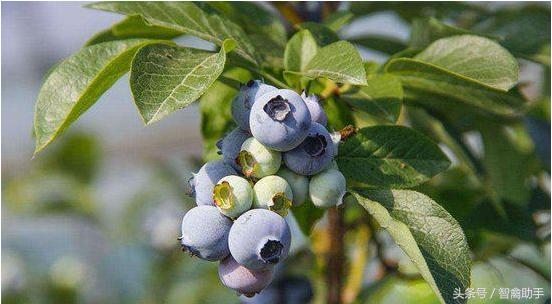
Photo: blueberry planting
I. Construction of solar greenhouse
1. The location of greenhouse: the greenhouse should be constructed with flat terrain, good light, high content of soil organic matter, convenient drainage and irrigation and no pollution of soil, water and air. When selecting planting plots, it is necessary to understand or determine the soil pH value and the content of organic matter. If the mountain area should choose the middle and lower part of the sunny slope as far as possible, the slope should not exceed 15 °, and the terrace with the lowest width of 8m should be built when the slope is greater than 15 °.
two。 The specification standard of greenhouse: greenhouse span is generally about 8-10m, wall thickness is 1m, ridge height is 4m, rear wall height is 3m, the rear wall is 1.5m from the ground horizontal every 4m to set a 60cm × 60cm vent, greenhouse length is not limited; greenhouse back wall mound and brick can be; there should be a certain distance between greenhouses, the distance should not be less than 1.8x of greenhouse height, with the principle of not shading. The film can be made of PE drip-free plastic film with polyethylene as the main raw material and PVC non-drip plastic film with PVC as the main raw material; the temperature suitable for blueberry growth in the greenhouse is 20-25 ℃, the highest can not exceed 30 ℃, and the lowest can not be less than 12 ℃.
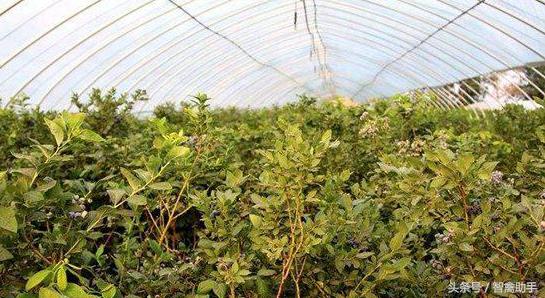
Photo: blueberry planting
Soil conditions and soil improvement of blueberries in greenhouse.
Soil pH value, organic matter content, water content, air permeability, drainage and other conditions will have a significant impact on the growth of blueberry, which is an important prerequisite for successful cultivation of blueberry.
1. Soil pH: blueberries like acidic soil, most blueberries can grow normally in acidic sandy soil with pH values of 4.35.3, but different blueberry varieties have different requirements for soil pH. The suitable pH value of soil for high clump is 4.3-4.8, and 4.5 is the best. The lower limit of pH value is 3.8, and lower than 3.8 will cause damage to plant growth. The soil pH value should be less than 7.0, and the best pH value is 4.0-6.0.
two。 Soil organic matter content: blueberries are suitable to grow in a soil environment with an organic matter content of 3% / 15%. Tall blueberries especially need soils with high organic matter content, which can only grow healthily in soils with more than 3% organic matter content.
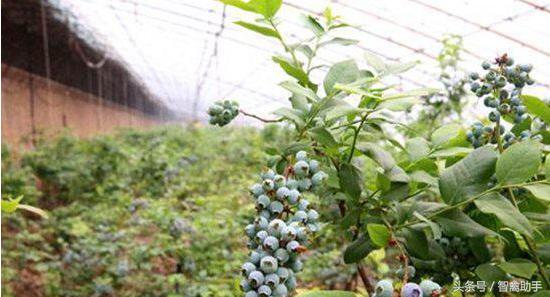
Photo: blueberry planting
3. Soil aeration and water retention: the effective soil layer of blueberry cultivation should be kept around 50cm, so it is very important to ensure soil ventilation and water retention in blueberry cultivation, especially high clump blueberry requires better ventilation and water retention. In general, the three-phase distribution of soil is 45% Murray 50% in solid phase, 20% in gas phase and 30% in liquid phase respectively, but the comprehensive value of soil gas phase and liquid phase in blueberry cultivation is ideal if it reaches 55% murine 60%. In order to achieve a more reasonable state of soil three-phase, we can carry out 30-40cm deep ploughing, and then according to the soil conditions, properly add rotten moss, sawdust and cow dung into the soil, and then hit the ridge with high 30cm when planting seedlings, so as to basically meet the growth requirements of blueberries.
4. Adjustment methods of soil acidity and alkalinity: the main problem of soil pH in most areas of China is that the pH value is on the high side. Cultivation in greenhouse can make organic soil suitable for blueberry growth before planting, but it is also difficult to fully meet the requirements of varieties on soil pH value, so it is necessary to adjust soil pH before planting. At present, the common method of soil regulation at home and abroad is to apply sulfur to adjust soil pH value. The main characteristic of the regulation of soil pH value by sulfur is that the effect is lasting and stable. After sulfur is applied into the soil, it takes 30-50 days to decompose before it can regulate the pH value of the soil. The adjustment target of soil pH value should be set at 4.5. If the expected target is not achieved after adjustment, 90% water-soluble sulfur spraying can be used for the second adjustment. Under the condition of sandy soil, when it is reduced by 1%, it can be treated according to the standard of 15g/m2 water-soluble sulfur, and the amount of other soil is twice as much as that of sandy soil. However, it is appropriate to apply water-soluble sulfur not more than 178kg/hm2 each time, and if it must be overused, it should be applied twice in spring and autumn.
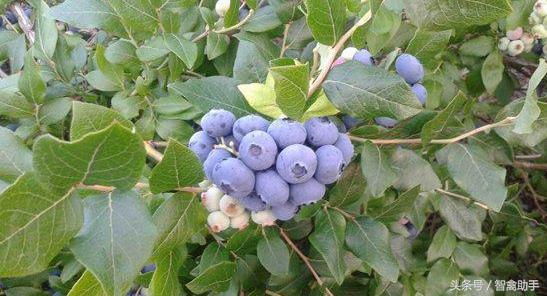
Photo: blueberry planting
Third, the collocation of blueberry planting density and varieties in greenhouse.
1. Planting density: in open field cultivation, the row spacing of tall blueberry is 1.0m × 2.0m, and the planting density in greenhouse is slightly higher than that in open field, and the distance of 0.5m × 1.5m is suitable.
two。 Soil preparation: generally, the specification of planting hole in open field is 1.0m × 1.0m × 0.5m. After the planting hole is dug, the soil is mixed with ground pine bark, peat or humus soil under the pine forest, mixed evenly, and then backfilled into the hole, the backfill soil should be 20-30cm higher than the ground, and an appropriate amount of sulfur powder can be mixed in the case of insufficient soil acidity. Greenhouse cultivation can learn from the soil preparation method of open field cultivation, but it must be higher than the depth and degree of open field cultivation. Generally, it is best to make comprehensive soil preparation, using 50% of garden soil, and then adding 50% peat, rotten leaf soil, and so on. Improve the content of organic matter and ventilation of the soil. After soil preparation, the beds with a height of 20-30cm can be made, and the seedlings can be implanted directly when planting.
3. Variety configuration and planting time: high clump blueberry self-blooming can bear fruit, but the combination of several varieties can significantly improve the seed setting rate. Therefore, when promoting the cultivation of blueberries in greenhouse, the selected high-clump blueberries had better be pollinated with more than two varieties to improve the yield and quality. The ratio of main varieties to pollination trees is generally 2-3 ∶ 1. The planting depth of one-year-old seedlings is 15-20cm. For every year of seedling growth, the general planting depth should be increased by 5cm, and the soil should be covered and compacted. If the seedling is used, it can be planted all the year round.
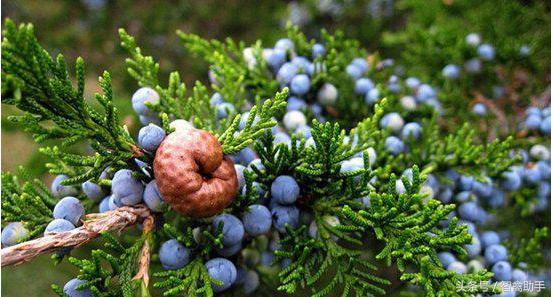
Photo: blueberry planting
IV. Production and management technology of blueberries in greenhouse
1. Fertilization: blueberry fertilizer demand is very low, in the case of soil acidity is satisfied, generally only need to apply a small amount of N fertilizer, too much fertilizer will often lead to excessive fertilizer damage to the tree and affect the yield. The use of nitrate N is prohibited, and urea is better. In the application of K fertilizer, do not apply KCL, can use K2SO4 and so on. Organic fertilizer and farm manure such as pig and cow manure should be applied as far as possible in production. Can also spread green manure such as white clover and so on. The method of fertilization is generally suitable for ditch application, which can effectively reduce the loss of fertilizer and water. When applying chemical fertilizer, the ditch width is 20-25cm and the ditch depth is 10-15cm.When applying farm manure or pressing green in autumn and winter, the ditch width is 30-35cm and the ditch depth is 35-40cm. the green manure is buried in the soil by digging and pressing green, and the fertilization time is generally divided into three times during germination, fruit ripening and postharvest.
two。 Irrigation: blueberry root distribution is shallow, like moisture, timely irrigation is very necessary. Irrigation needs to pay attention to water source and water quality. Deep well water generally has high pH value and high contents of sodium and calcium. Long-term use will affect the growth and yield of blueberry. PH value can be adjusted to about 4.5 with sulfuric acid during irrigation, but acid water should be irrigated again at intervals of 3 times.
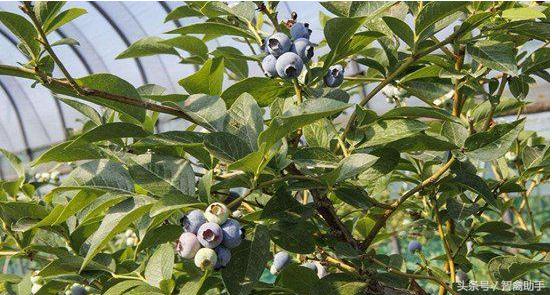
Photo: blueberry planting
3. Temperature control: the key to promoting cultivation is to break the flower bud differentiation and dormancy period of blueberry. The temperature suitable for blueberry growth in the greenhouse is 20-25 ℃, the highest can not exceed 30 ℃, and the lowest can not be lower than 12 ℃. The cold requirement of blueberry in high bushes should be accumulated at a low temperature of 0-7.2 ℃, and the accumulation time should be 800-1200 h. When the requirement of low temperature is insufficient, it will cause poor germination and insufficient flowering, which will affect the yield and quality of fruit. The key to realizing the production of blueberries in the wrong season is to adjust the dormancy time of blueberries timely. The noteworthy problem is that no matter the dormancy enters the low temperature state in advance, or the dormancy is transferred to the growth period after the dormancy is completed, the temperature control must be carried out slowly, and the temperature difference should not be too large in a short period of time, so as not to affect the growth and development of blueberries. The greenhouse is in a sealed state, because blueberry respiration and soil organic matter decomposition can make great changes in the gas composition in the greenhouse, which will affect the growth of blueberries, so appropriate ventilation should be carried out every day; generally, under the condition that the greenhouse temperature does not drop below 12 ℃, the ventilation is opened at 11 ∶ 00 and closed at 16 ∶ 00 every day.
4. Plastic pruning of blueberries in greenhouse: pruning in the young tree stage. The main purpose of this period is to remove flower buds in order to expand the crown, increase the number of branches and promote the development of root system. The weak and small branches were thinned in spring in the second and third year after planting, and the crown was still enlarged in the third and fourth year, but it could bear fruit in an appropriate amount. In general, the yield of plants in the third year should be controlled below 1kg, mainly with strong branches. Adult trees are pruned. At this time, pruning is mainly to control tree height, improve light conditions, mainly thinning branches, thinning dense branches, thin and weak branches, disease and insect branches and root tillers. The root potential of the open variety was weaker and stronger than that of the open variety, while the erect variety went to the central stem, opened the skylight and left the middle branch. The best fruiting age of big branch is 5-6 years old, which should be retracted and renewed in time. Weak twigs wipe off flower buds to make them strong. Adult trees have a large number of flowers, so it is necessary to cut off part of the flower buds, generally leaving 4-6 flower buds for each strong branch.
Photo: blueberry planting
5. Blueberry pollination in greenhouse
When growing blueberries in greenhouse, the best pollination method is the combination of bee pollination and artificial pollination. A beehive can be placed in each greenhouse during flowering and pollinated by bees, but there will be individual omissions, which need to be remedied by artificial pollination, or low concentration of gibberellin can be sprayed to promote fruit expansion. The experimental results show that stocking bees is the most economical, efficient and productive method at present.
6. Picking blueberries in greenhouse
The fruit ripening period of alpine blueberries is different, and the general harvest lasts for 3-4 weeks, so the harvest should be harvested in batches, usually once every other week. After harvest, put into plastic food boxes, and then into shallow plates, transported to the market, should try to avoid extrusion, exposure, wind and rain, and so on.
[conclusion] planting blueberries in greenhouse is an important measure to achieve the goal of high yield, high quality and high efficiency of blueberries. Above for you to introduce the greenhouse blueberry planting techniques, I hope to be able to help you!
- Prev
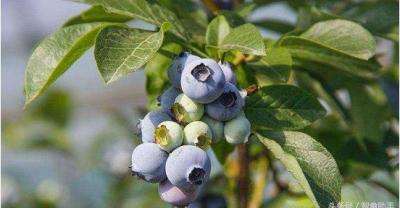
How to plant traditional Chinese medicine Polygonum multiflorum?
Polygonum multiflorum has the effects of delaying aging, enhancing immunity, reducing blood lipids, anti-arteriosclerosis, improving memory and so on. Taste bitter, sweet, astringent, return to the liver, heart, kidney. ...
- Next
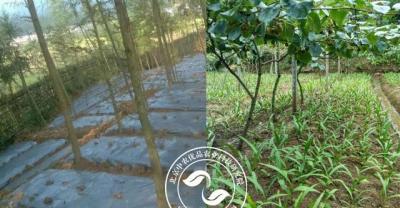
Can moxa grass be planted in rural areas?
Moxa grass is distributed in Northeast, North China, East China, South China, Southwest, Northwest, etc., most provinces and regions in China are distributed, mostly wild, but also a small amount of cultivation.
Related
- Fuxing push coffee new agricultural production and marketing class: lack of small-scale processing plants
- Jujube rice field leisure farm deep ploughing Yilan for five years to create a space for organic food and play
- Nongyu Farm-A trial of organic papaya for brave women with advanced technology
- Four points for attention in the prevention and control of diseases and insect pests of edible fungi
- How to add nutrient solution to Edible Fungi
- Is there any good way to control edible fungus mites?
- Open Inoculation Technology of Edible Fungi
- Is there any clever way to use fertilizer for edible fungus in winter?
- What agents are used to kill the pathogens of edible fungi in the mushroom shed?
- Rapid drying of Edible Fungi

